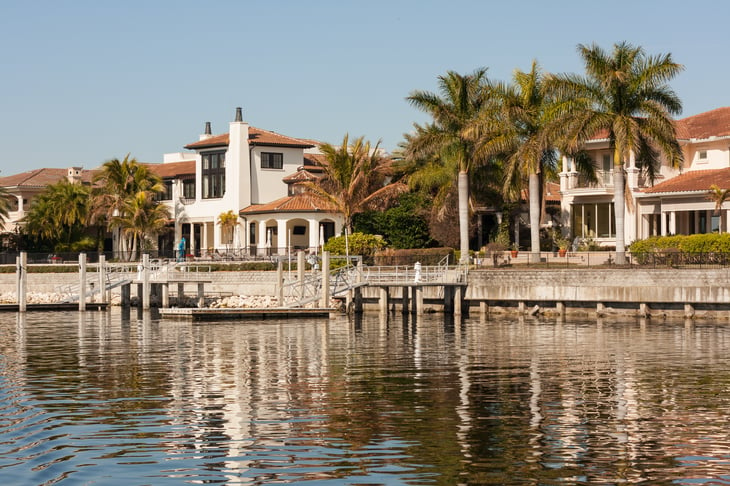
This story originally appeared on Porch.
As mortgage rates reach historic lows, prospective homebuyers are in a strong position to purchase their first house. One of the most important questions prospective homebuyers need to answer is whether they would prefer to buy a new or old home.
Newly constructed homes have a lot of benefits for homebuyers. According to a recent survey by the National Association of Realtors, buyers who purchase new homes enjoy having access to new community amenities, smart home features, higher energy efficiency and new systems and appliances that shouldn’t soon require replacement or renovation. By contrast, buyers who purchase previously owned homes tend to prioritize affordability or value.
Research from the National Association of Home Builders shows that in 2018, 31 percent of home buyers wanted to purchase a brand-new home offered by a builder. For millennial home buyers, that number was even higher at 41 percent.
However, according to data from the U.S. Census Bureau, only 20.4 percent of all homes in the U.S. were built in the past two decades. Furthermore, only 4.6 percent of homes were constructed after 2014. This constraint on inventory indicates that even if a homebuyer would prefer a new home, they may not be able to find one.
However, housing inventory varies significantly by location and some parts of the country are more likely than others to have new homes.
At a more local level, some fast-growing cities are experiencing a boom in housing construction, increasing the share of new homes on the market. To find which cities have the highest percentage of homes built after 2000, researchers at Porch analyzed housing data from the U.S. Census Bureau’s 2019 American Community Survey 1-Year Estimates and pricing data from the Zillow Home Value Index.
To identify the locations with the newest homes, researchers calculated the percentage of housing units built in 2000 or later. In the event of a tie, the location with more total housing units built since 2000 was ranked higher. The data on year built includes both occupied and vacant housing units. Year built refers to when the building was first constructed, not when it was remodeled. Both single-family homes and housing units in multi-unit structures (e.g. apartments, condominiums, etc.) are included. Additionally, only cities with at least 100,000 residents and data available from both Zillow and the Census Bureau were included.
Here are the large cities with the most new homes.
15. Colorado Springs, CO

- Percentage of homes built in 2000 or later: 24.9%
- Number of homes built in 2000 or later: 49,653
- Percentage of homes that are single-family: 68.7%
- Median number of rooms per home: 5.8
- Median home price: $339,146
14. San Antonio, TX

- Percentage of homes built in 2000 or later: 25.4%
- Number of homes built in 2000 or later: 142,342
- Percentage of homes that are single-family: 63.0%
- Median number of rooms per home: 5.1
- Median home price: $191,405
13. El Paso, TX

- Percentage of homes built in 2000 or later: 26.3%
- Number of homes built in 2000 or later: 65,842
- Percentage of homes that are single-family: 70.5%
- Median number of rooms per home: 5.2
- Median home price: $141,955
12. Nashville, TN

- Percentage of homes built in 2000 or later: 26.8%
- Number of homes built in 2000 or later: 84,090
- Percentage of homes that are single-family: 58.7%
- Median number of rooms per home: 5.0
- Median home price: $299,838
11. Jacksonville, FL

- Percentage of homes built in 2000 or later: 27.4%
- Number of homes built in 2000 or later: 108,679
- Percentage of homes that are single-family: 65.3%
- Median number of rooms per home: 5.5
- Median home price: $202,568
10. Tampa, FL

- Percentage of homes built in 2000 or later: 27.7%
- Number of homes built in 2000 or later: 48,277
- Percentage of homes that are single-family: 58.9%
- Median number of rooms per home: 4.9
- Median home price: $264,815
9. Seattle, WA

- Percentage of homes built in 2000 or later: 28.7%
- Number of homes built in 2000 or later: 106,592
- Percentage of homes that are single-family: 44.9%
- Median number of rooms per home: 4.1
- Median home price: $780,126
8. Las Vegas, NV

- Percentage of homes built in 2000 or later: 28.8%
- Number of homes built in 2000 or later: 74,581
- Percentage of homes that are single-family: 66.3%
- Median number of rooms per home: 5.1
- Median home price: $296,730
7. Miami, FL

- Percentage of homes built in 2000 or later: 29.6%
- Number of homes built in 2000 or later: 65,449
- Percentage of homes that are single-family: 32.9%
- Median number of rooms per home: 3.8
- Median home price: $378,798
6. Bakersfield, CA

- Percentage of homes built in 2000 or later: 31.0%
- Number of homes built in 2000 or later: 38,763
- Percentage of homes that are single-family: 74.9%
- Median number of rooms per home: 5.2
- Median home price: $263,046
5. Charlotte, NC

- Percentage of homes built in 2000 or later: 33.8%
- Number of homes built in 2000 or later: 126,802
- Percentage of homes that are single-family: 62.8%
- Median number of rooms per home: 5.3
- Median home price: $262,385
4. Atlanta, GA

- Percentage of homes built in 2000 or later: 34.5%
- Number of homes built in 2000 or later: 87,366
- Percentage of homes that are single-family: 43.6%
- Median number of rooms per home: 4.6
- Median home price: $301,901
3. Fort Worth, TX

- Percentage of homes built in 2000 or later: 34.5%
- Number of homes built in 2000 or later: 119,489
- Percentage of homes that are single-family: 68.4%
- Median number of rooms per home: 5.3
- Median home price: $216,935
2. Austin, TX

- Percentage of homes built in 2000 or later: 36.2%
- Number of homes built in 2000 or later: 160,003
- Percentage of homes that are single-family: 49.4%
- Median number of rooms per home: 4.5
- Median home price: $422,252
1. Raleigh, NC

- Percentage of homes built in 2000 or later: 36.5%
- Number of homes built in 2000 or later: 75,088
- Percentage of homes that are single-family: 58.5%
- Median number of rooms per home: 5.1
- Median home price: $297,861





Add a Comment
Our Policy: We welcome relevant and respectful comments in order to foster healthy and informative discussions. All other comments may be removed. Comments with links are automatically held for moderation.